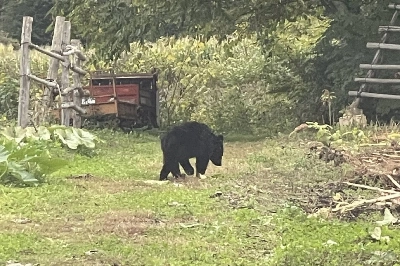* Japanese name: Hasami mushi
* Scientific name: Dermaptera species
* Description: Earwigs are small (20 mm long), dark-colored insects with flattened bodies and a semi-circular, very thin pair of wings. The wings are elaborately folded under tiny elytra (wing cases), and it is the nature of the wing (thin, like sunburned, peeling skin) that gives the order its scientific name: Dermaptera means "skin wing." Earwigs have long antennae, up to 50 segments long. But the most obvious thing about earwigs, and their easiest identifying feature, are the forceps on the end of the abdomen. In males they are curved, in females they are straight. The function of the forceps is not clear -- they are sometimes raised, scorpion-like, over the abdomen when the insect is threatened, and they are sometimes used when males wrestle. The forceps give earwigs their Japanese name, meaning "scissor insect."
* Where to find them: All over the country, all year round (though they tend to be less active in winter). Earwigs are nocturnal, and during the day they like to squeeze into dark, narrow crevices so that they can feel contact on their upper and lower bodies. Turning over rocks and stones is a good way to find them.
* Food: Earwigs are omnivorous scavengers, eating everything from flower petals to carrion and small living insects. They have simple biting jaws. Despite the sharp forceps, earwigs are not harmful to humans.
* Special features: Female earwigs care for their offspring, a rare thing in insects. The mother lays her eggs into soil and tends them during the winter, collecting them together if they become scattered. When the eggs hatch in spring, the nymphs are fed by their mother and stay in the soil until their second molt. Even after the young earwigs emerge from the soil, their mother continues feeding them, and in spring sometimes a group of earwigs -- the mother and her offspring -- can be seen on a family outing. Mating takes place before winter, and it is here that the unprepossessing earwig shows another remarkable feature: Males have two, extremely long penises (sometimes longer than their bodies). The female has only one reproductive tract, but it is also very long, a convoluted tube. Sometimes during copulation, the male's penis breaks off from his body and is lost inside the female. This is not as disastrous as it might be, because, Japanese research suggests, the male can simply use his spare penis.
11 hours ago


















With your current subscription plan you can comment on stories. However, before writing your first comment, please create a display name in the Profile section of your subscriber account page.